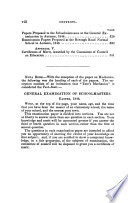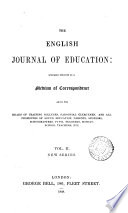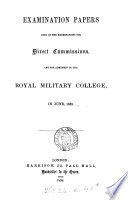 The angles at the base of an isosceles triangle are equal to each other ; and if the equal sides be produced, the angles on the other side of the base shall be equal. The angles at the base of an isosceles triangle are equal to each other ; and if the equal sides be produced, the angles on the other side of the base shall be equal.  Principles of psychology - Page 21by Herbert Spencer - 1910Full view Principles of psychology - Page 21by Herbert Spencer - 1910Full view - About this book
 | John Charles Snowball - 1837 - 322 pages
...С); Again, since each of the angles A, B, С is less than тг, .-. A + B + С<3тг. 22. The angles at the base of an isosceles triangle are equal to each other. (Fig. Art. 28.) Suppose ABC to be an isosceles triangle, having AB = AC, and therefore ¿ AOB = z AOC.... | |
 | Thomas Holliday - Surveying - 1838 - 404 pages
...the shortest straight line that can be drawn from the vertical angle to the base. Note 1. The angles at the base of an isosceles triangle are equal to each other. 2. A line drawn from the middle of the base of an isosceles triangle to the opposite angle is perpendicular... | |
 | Euclides - 1845 - 546 pages
...of the one equal to two sides, &c. Which was to be demonstrated. PROPOSITION V. THEOREM. The angles at the base of an isosceles triangle are equal to each other; and if the equal sides be produced, the angles on the other side of the base shall be equal. Let ABC... | |
 | J. Goodall, W. Hammond - 1848 - 390 pages
...Draw a straight line perpendicular to a given straight line from a given point in it. 3. The angles at the base of an isosceles triangle are equal to each other, and if the equal sides be produced the angles on the other side of the base shall be equal. SECTION... | |
 | Great Britain. Council on Education - Education - 1848 - 596 pages
...one side of it are either two right angles, or are together equal to two right angles. 2. The angles at the base of an isosceles triangle are equal to each other. 3. Define parallel straight lines. State the axiom which you assume respecting such lines; and explain... | |
 | Education - 1848 - 542 pages
...it. — See " Bell's Euclid," prop. i. book i. ; or " Tate's Geometry," &c. page 21. 3. The angles at the base of an isosceles triangle are equal to each other, and if the equal sides be produced, the angles on the other side of the base shall be equal. — See... | |
 | Great Britain. Committee on Education - 1848 - 606 pages
...one side of it are either two right angles, or are together equal to two right angles. 2. The angles at the base of an isosceles triangle are equal to each other. 3. Define parallel straight lines. State the axiom which you assume respecting such lines ; and explain... | |
 | Education - 1863 - 830 pages
...; prove that AC and BD bisect each other. Under wht circumstances will AC equal BD ? 8. The angles at the base of an isosceles triangle are equal to each other. Give Euclid's proof of this proposition. How might it be proved if you were permitted to bisect an... | |
 | Charles James Blomfield - Philosophy, Ancient - 1853 - 452 pages
...inserted in the ' Memento of Kuclid-' 1. That a circle is bisected by its diameter. 2. T hat the angles at the base of an isosceles triangle are equal to each other. 3. That two straight lines intersecting one another make the vertical angles, at the point of intersection,... | |
 | War office - 1858 - 578 pages
...containing 14lbs. of the composition ? Euclid. 1. Define an isosceles triangle : prove that the angles at the base of an isosceles triangle are equal to each other, and if the equal sides be produced, the angles on the other side of the base will be equal. Enunciate... | |
| |